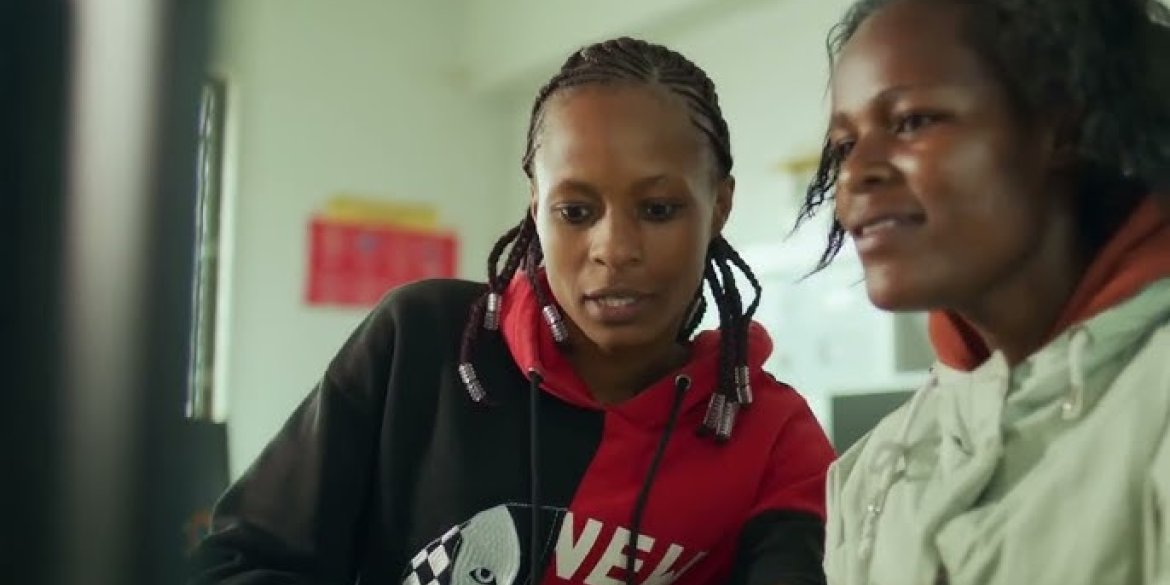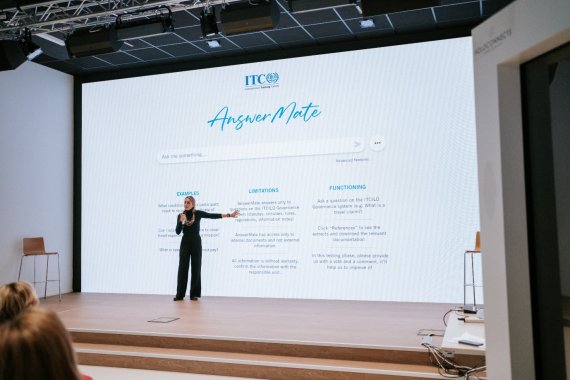Transforming TVET in Kenya: A collaborative journey with the ILO, ITCILO, and KSTVET
Transforming TVET in Kenya: A collaborative journey with the ILO, ITCILO, and KSTVET
Empowering skills for prosperity through digitalization and strategic shifts
4 March 2024

In the dynamic landscape of technical and vocational education and training (TVET), the Kenyan School of TVET (KSTVET) stands as a symbol of transformation. Partnering with the International Labour Organization (ILO) and the International Training Centre of the International Labour Organization (ITCILO), KSTVET has embarked on a remarkable journey to reshape its role and enhance its digital capabilities. This collaboration is part of the broader initiative, PROSPECTS, which focuses on improving the prospects of forcibly displaced persons and host communities. Through strategic planning, capacity building, and digital innovation, KSTVET is not just adapting to change but emerging as a centre of excellence with the potential to influence the entire TVET sector in Africa. This narrative tells the story of KSTVET’s evolution, its partnerships with the ILO and ITCILO, and the transformative impact on TVET in Kenya and beyond.
What is KSTVET?
The Kenyan School of TVET (KSTVET) is a government institution under the Ministry of Education. Established in 1978, its primary purpose is to train teachers for secondary schools and tertiary institutions. It has become a prominent institution in eastern and central Africa.
Today, KSTVET develops training materials, conducts research, and fosters linkages with stakeholders and other institutions to promote quality, relevant training experiences. It strives to respond to the demands of the labour market and promote innovation.
What is PROSPECTS?
The ILO’s PROSPECTS programme in Kenya aims to support the creation of decent work and livelihood opportunities, improve access to education and training, and strengthen protection for refugees and the communities that host them.
The ILO’s work with KSTVET is embedded in the skills component of the project. The shared goal is to promote market-driven skills development, recognition, and certification of skills in line with the Kenya National Qualification Framework.
What is changing at KSTVET?
KSTVET’s role has expanded to include not only teachers but also all people involved throughout the TVET system, including managers of TVET centres, assessors, counselors, and those conducting training in companies.
What is ITCILO’s role?
The ITCILO has played a crucial role in supporting KSTVET’s recent strategic shift. The new plan is multi-faceted and involves developing new content, reshaping old content, and enhancing digital performance.
Following a scoping mission that used a participatory methodology, ITCILO and KSTVET were ready to work together.
The Centre guided KSTVET through the development of a training course for TVET managers at three levels. The goal is to pilot the first level, and then roll it out while simultaneously developing the intermediate and advanced levels.
This way, KSTVET will begin to follow the same triple helix model that the ITCILO follows, triggering change on the individual, institutional, and systems levels.
The ITCILO also helped KSTVET appoint an Open and Distance eLearning Focal Point, paving the way for more online courses and the digitalization of the country’s TVET system as a whole.
What is the ILO perspective?
The ILO and ITCILO regularly collaborate to enhance the digitalization of training courses, particularly at institutions like KSTVET, which lies at the heart of Kenya’s TVET system. KSTVET’s unique mandate and ambitious approach make it a strategic partner, aligning with the government’s call for a new strategic plan.
Geforey Ochola, National Programme Coordinator at the ILO in Kenya, notes that the partnership began with a capacity development assessment under the Skills for Prosperity programme, leading to consultations with KSTVET. The partnership was initiated with a strategic plan to rebrand, digitize, and develop a professional development programme for trainers.
Challenges arose: There was low capacity among trainers in implementing digital programmes and staffing issues. Infrastructure hurdles, such as the need for a media center and equipment, also arose. And the outdated curricula required extensive review and involvement of various stakeholders, including regulators and government officials.
Joyce Baraza, Deputy Director of KSTVET, notes that the establishment of a new department for open, distance, and e-learning is expected to address these challenges, along with the support from ILO, external consultants, and ongoing efforts to equip the institution.
“For us, we thought, how do we build this institution to be the champion?” said Geofrey. “How do we make sure we have enough capacity to not only design programmes but also respond to the needs of Kenyans?”
Despite the challenges, the collaboration progressed. The annual calendar was aligned with the new strategic plan, ensuring a phased approach to digitization. The support of the principal and additional on-site consultants facilitated the process, demonstrating the importance of building capacity while delivering on strategic objectives.
Alice Vozza, Skills and Lifelong Learning Specialist at the ILO, emphasizes the importance of reinforcing entire systems, rather than focusing solely on direct beneficiary engagement. The ILO’s goal is to strengthen institutions like KSTVET, with a vision of them becoming skills hubs for industrial transformation.
“That’s the long term vision,” Alice said. “It’s one of the institutions that can become a centre of excellence not only for Kenya, but for the whole East Africa region.”
The collaboration extends to a broader initiative by ILO and UNIDO for skills development in Africa, where KSTVET is identified as a major candidate for technical and curricula support. The success of the project is measured not only by the training itself but also by the number of trainees accessing employment opportunities, aligning with the overarching goal of responding to ground-level needs.
Alice reflected on the challenge of co-writing the strategic plan, emphasizing the importance of liberating institutions from rigid planning tools to encourage strategic thinking. She commended KSTVET’s openness and transparency, stressing the importance of building trust in partnerships.
What does KSTVET look like today?
Today, KSTVET takes a demand-driven approach to planning its courses and content, reaching tens of thousands of people through 1,300 TVET centres across the country.
Stefano Merante, Head of the CATALYST Initiative at ITCILO, is one of the officials involved in the project.
“We are not a [training] course factory,” he said. “This is how you can have a project within a project to directly reach hundreds of thousands, and indirectly reach millions.”
Joyce noted that KSTVET plans to engage in South-South cooperation with other TVET institutions in Africa. Collaborations with bodies like ATUPA (Association of Technical Universities and Polytechnics in Africa) and the African Union are part of the vision to connect with institutions across the continent.
“We’re working on expanding beyond our country,” Joyce said. “Course on leadership, online modules, and plans to cascade this training to trainers in the East African region, most likely online.”
These themes collectively portray KSTVET's commitment to regional excellence, overcoming challenges in digitalization, engaging in meaningful collaborations, and addressing the evolving needs of TVET through initiatives like RPL and green transition.
What does the future hold?
This project is part of a broader network and has the potential for significant impact in the region. KSTVET has been appointed as a center of excellence by the African Union for the TVET sector, with aspirations to become a reference for the continent. The project also aims to establish connections with other UN agencies, emphasizing the importance of linking similar institutional capacity-building projects horizontally to address common challenges such as outreach, financing, and investments.
“There are so many institutional capacity building projects, but this – linking them up horizontally – is an innovative thing to do, and another great story to tell,” said Stefano.
Alice sees the potential to mainstream environmental considerations, post-digitalization. She also highlights the importance of perception in promoting TVET, viewing KSTVET as a potential champion and partner in influencing companies and youth to embrace TVET as a career choice. The broader vision includes collaboration with other regions through South-South cooperation, reinforcing the regional scope of the project, and positioning TVET at the forefront of industrialization across Africa.
“We are making progress in the TVET sector, building a path forward,” said Joyce. “Maybe in 10 years’ time, we will be involved in digitizing Africa.”


